Faces of people can be seen in quiet emotional conditions or it is possible
to observe emotional movements of facial features, and also photos of human
faces display quiet emotional conditions or display the excited emotions.
Therefore during visual identification of psychological types in analytical
physiognomy it is necessary to analyze some photos or to consider faces in a
reality, and it is necessary to take into account quiet emotional conditions and
also conditions in which different emotional movements of facial features are shown.
And also it is necessary to take into account that emotional movements can cause
doubtful identification, namely in some cases mobile features of harmonious
psychological type can seem as attributes of contrast psychological type.

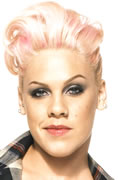


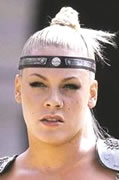
28 56
56 55
55 30
30 in
aggregate 62th
in
aggregate 62th or 34th
or 34th
For example, in photos of singer Pink (Alecia Moore) it is possible to see:
- in all photos the right and left eyes are symmetric, but as a whole the size
of eyes is small that corresponds to obvious introversion;
- in 1st and 2nd photos the left eyebrow has a greater tone in comparison with
the right eyebrow that corresponds to active ethical function and passive logic
function, and also the right corner of a mouth has a greater tone in comparison
with the left corner of a mouth that corresponds to active intuitive function
and passive sensory function, and in the second photo a greater tone of the left
eyebrow and the right corner of a mouth is amplified with significant emotional
movement;
- in 3rd photo the right eyebrow has a greater tone in comparison with the left
eyebrow that corresponds to active logic function and passive ethical function,
and corners of a mouth are symmetric but as a whole the mouth has a strong tone
that corresponds to obvious sensory function and unobvious intuitive function;
- in 4th photo the left corner of a mouth has a greater tone in comparison with
the right corner of a mouth that corresponds to active sensory function and
passive intuitive function, and eyebrows are symmetric but as a whole eyebrows
have a strong tone that corresponds to obvious ethical function and unobvious
logic function;
- in 5th photo the right eyebrow has a greater tone in comparison with the left
eyebrow that corresponds to active logic function and passive ethical function,
and also the left corner of a mouth has a greater tone in comparison with the
right corner of a mouth that corresponds to active sensory function and passive
intuitive function.
In aggregate agrees to the shown photos it is possible to identify 62nd or 34th
harmonious psychological type of analytical physiognomy. But can seem that in
1st and 2nd photos it is possible to see 28th contrast psychological type, in
3rd photo - 56th explicit type, in 4th photo - 55th explicit type, in 5th photo
- 30th contrast type of analytical physiognomy. Though in essence in 1-2 photos
the ethical-intuitive introverted type IFNJ or intuitive-ethical introverted
type IFNP is shown, and in 3-4-5 photos the logic-sensory introverted type ITSJ
or sensory-logic introverted type ITSP is shown within the 62nd or 34th
harmonious psychological types of analytical physiognomy.
Hence, in photos and in real faces of people it is necessary to take into
account symmetry or asymmetry of facial features in quiet emotional conditions,
and also it is necessary to take into account emotional movements which are
connected to displays of mental functions. For example, if the left eyebrow and
the right corner of a mouth are active then the impression can arise that the
human person is intuitive-ethical or ethical-intuitive, but actually the man can
only smile by the right corner of a mouth and do emotional movement by the left
eyebrow, and eyebrows and a mouth can be symmetric in quiet emotional conditions
that corresponds to harmonious psychological type which can be shown according
to different mental functions.
And also it is necessary to take into account long emotional conditions which
can be perceived as transformation of psychological types.
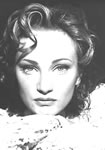
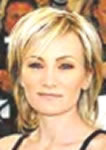
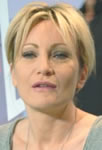 34
34 28
28
For example, in photos of singer Patricia Kaas it is possible to see:
- in all photos the right eye and the left eye are symmetric and as a whole the
size of eyes is small that corresponds to obvious introversion;
- in 1st photo eyebrows are symmetric and as a whole have a strong tone that
corresponds to obvious ethical function and unobvious logic function, and also
corners of a mouth are symmetric and as a whole have a weak tone that
corresponds to obvious intuitive function and unobvious sensory function;
- in 2nd and 3rd photos the left eyebrow has a greater tone in comparison with
the right eyebrow that corresponds to active ethical function and passive logic
function, and also the right corner of a mouth has a greater tone in comparison
with the left corner of a mouth that corresponds to active intuitive function
and passive sensory function.
Activity of the right corner of a mouth is more appreciable in 2nd photo, and
activity of the left eyebrow is more appreciable in 3rd photo of Patricia Kaas.
According to 1st photo it is possible to identify 34th harmonious psychological
type of analytical physiognomy, but according to 2nd and 3rd photos it is
possible to identify 28th contrast psychological type. Hence it is possible to
assume that as a result of emotional movements there is a transformation of
initial harmonious psychological type to contrast psychological type which can
be valid during the long periods of time. Namely 34th harmonious psychological
type can have different displays, but as a result of ethical-intuitive or
intuitive-ethical displaying there is a transformation to 28th contrast
psychological type.
Or on the contrary 28th contrast psychological type is initial and is
transformed into harmonious type that is possible to determine more precisely
agrees to the greater number of photos.
Besides it is necessary to take into account mobile and motionless features of
human faces as features can be symmetric but motionless in harmonious or
explicit psychological types of analytical physiognomy in some cases, though
these types can be shown or function according to mental functions which are
connected with motionless or otherwise to tell unemotional features. For
example, in the photos of singer Pink it is possible to see symmetric and
motionless eyes which correspond with obvious introversion, namely in all photos
it is possible to see the identical sizes of eyes but nevertheless harmonious
psychological type of Pink is capable to show attributes of extraversion which
cannot be seen visually but can be assumed according to laws of analytical
physiognomy.
Or in photos of singer Patricia Kaas it is possible to see the motionless right
eyebrow and the motionless left corner of a mouth, but if psychological type of
Patricia Kaas is harmonious then can be shown as logic that corresponds with the
motionless right eyebrow, or can be shown as sensory that corresponds with the
motionless left corner of a mouth.
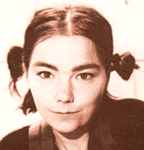
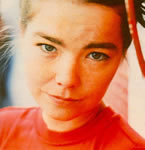
 35
35 39
39 in
aggregate 62th
in
aggregate 62th
Or in photos of singer Bjork it is possible to see:
- in 1st photo the right eye is more, and in 2nd photo the left eye is more, but
in 3rd photo the eyes are identical that corresponds to obvious introversion and
allows to speak about bilateral mobility of eyes. Namely attributes of
introversion are shown in the first photo and attributes of extraversion are
shown in the second photo, but in essence eyes are symmetric in quiet emotional
conditions that there corresponds to obvious introversion and unobvious
extraversion because as a whole the size of eyes is small;
- pay attention that the anatomic structure of upper eyelids of singer Bjork
forms interrelation of eyebrows with the seen size of eyes and consequently
emotional movement of the right eyebrow increases the size of right eye, and
emotional movement of the left eyebrow increases the size of left eye that
actually can not be authentic attributes of introversion or extraversion, namely
in this case and in similar cases it is necessary to analyze the size of eyes
when the left eyebrow and the right eyebrow have identical tones;
- in 1st photo the right eyebrow has a greater tone that corresponds to active
logic function, and in 2nd photo the left eyebrow has a greater tone that
corresponds to active ethical function, but in 3rd photo eyebrows are symmetric
that allows to speak about bilateral mobility of eyebrows, and also about
obvious ethical function and unobvious logic function because as a whole
eyebrows have a raised tone;
- in all photos the mouth is symmetric, namely the left corner and the right
corner of a mouth have an identical raised tone that allows to speak about
obvious sensory function and unobvious intuitive function, and also allows to
speak about symmetric mobility according to which the right corner and the left
corner of a mouth move in proportion with the excited emotional conditions which
can be seen in the shown photos of singer Bjork.
In 1st photo it is possible to see 35th explicit psychological type which is
shown as logic-sensory introverted ITSJ. In 2nd photo it is possible to see 39th
explicit psychological type which is shown as ethical-sensory extraverted EFSJ.
But in aggregate in the shown photos it is possible to identify 62th harmonious
psychological type which has bilateral mobility of eyebrows and eyes, and
consequently can be shown as logic-sensory or ethical-sensory and can show
attributes of introversion or extraversion, and also has symmetric mobility of
corners of a mouth and consequently can be shown as sensory or intuitive.
Thus, in total methodical rules of visual identification of psychological types
in a context of analytical physiognomy consist in the following.
Adjacent features of a face (eyebrows and/or corners of a mouth) of harmonious
psychological types have:
- symmetry in the quiet emotional conditions;
- bilateral mobility or immovability or symmetric mobility in the excited
emotional conditions.
Adjacent features of a face (eyebrows and corners of a mouth) of contrast
psychological types have:
- asymmetry in the quiet emotional conditions;
- unilateral mobility in the excited emotional conditions.
Explicit psychological types have:
- one pair of adjacent features of a face (eyebrows or corners of a mouth) have
asymmetry in the quiet emotional conditions and unilateral mobility in the
excited emotional condition;
- the second pair of adjacent features of a face (eyebrows or corners of a
mouth) have symmetry in the quiet emotional conditions, and immovability or
symmetric mobility in the excited emotional conditions.
Eyes in all cases can be symmetric or asymmetric, and also can be mobile or
motionless in three classes of psychological types of analytical physiognomy.
The following page results the information on auxiliary methods for identification of psychological types of analytical physiognomy by means of emotions of a human face, and also by means of positions (postures) of a human body.